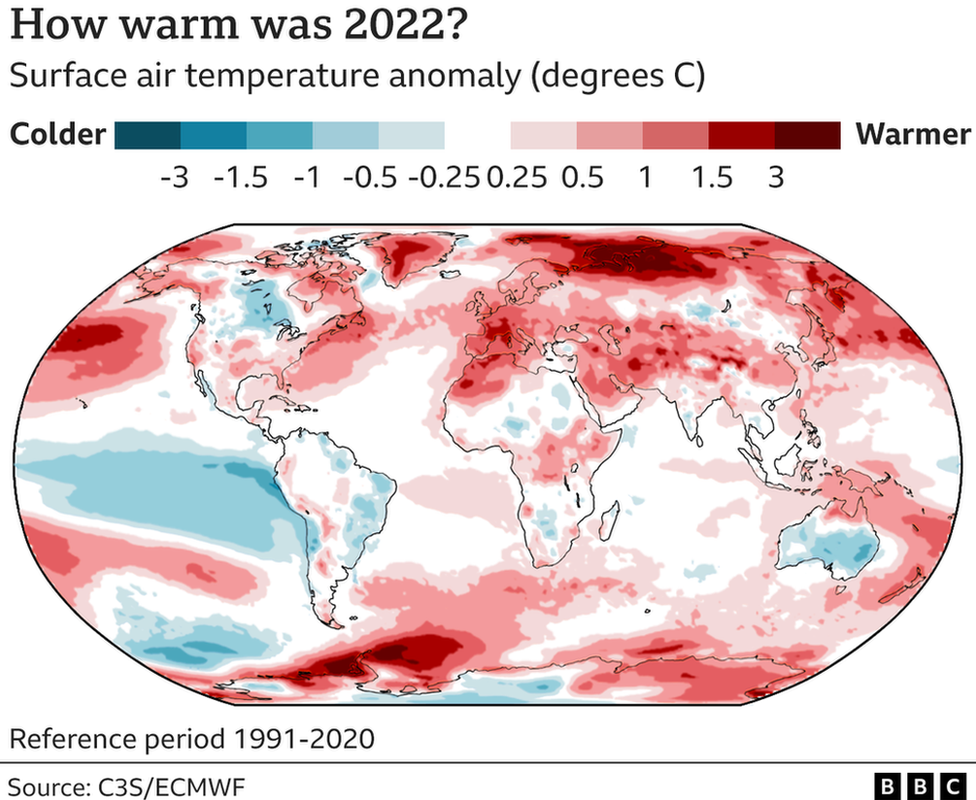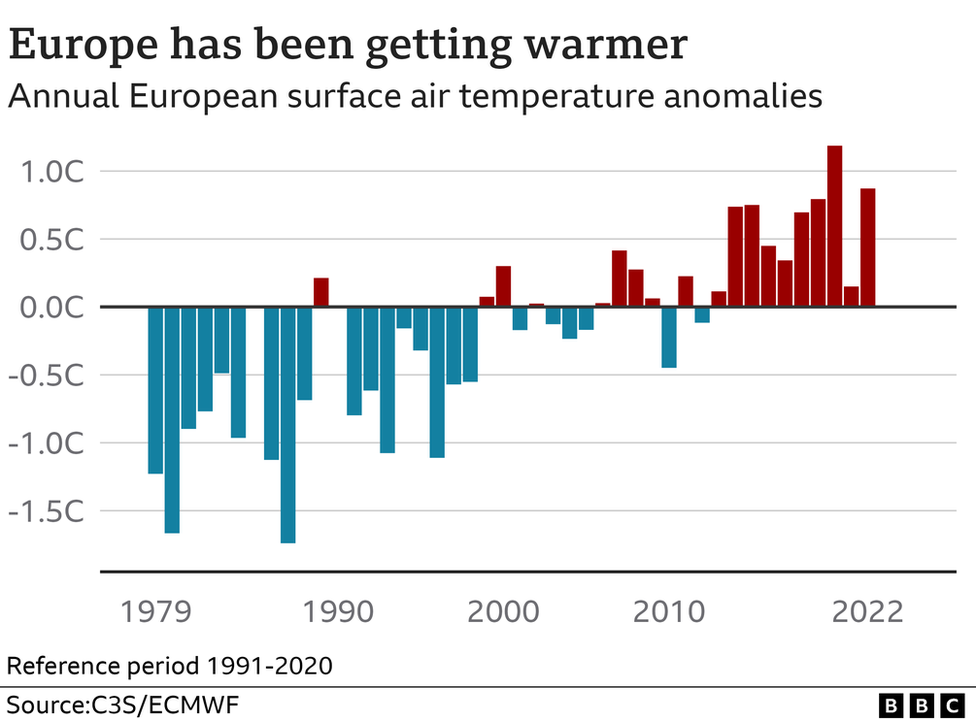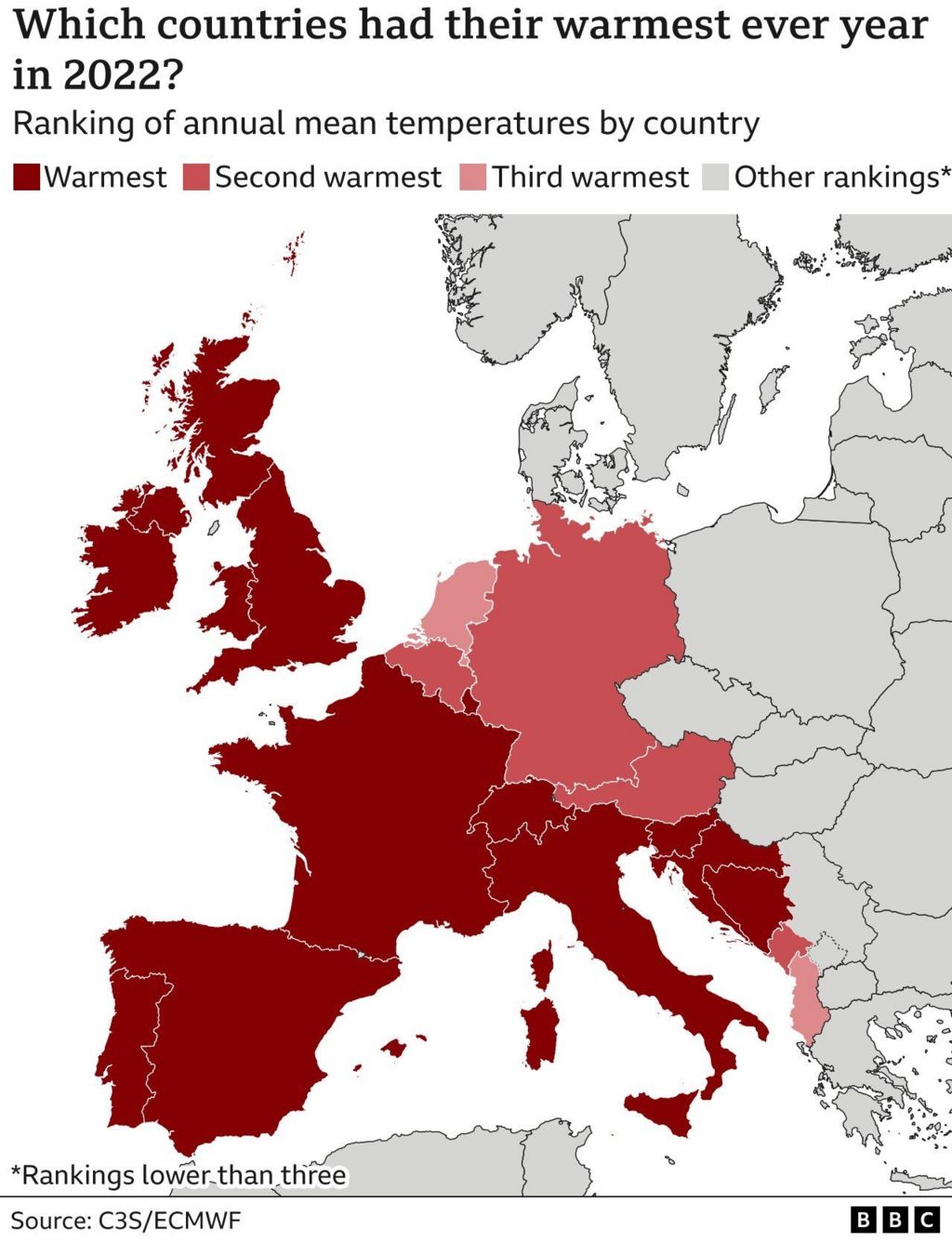Last year was the world’s fifth warmest year with Europe enduring its hottest summer on record
 Image source, Getty Images
Image source, Getty ImagesThe polar regions and Europe were hit hardest by global warming in 2022, according to a new analysis.
The data from Copernicus, the EU’s climate monitoring service, says 2022 was the fifth warmest year globally.
Europe experienced its warmest summer, with temperatures increasing by more than twice the global average over the past three decades, faster than any other continent.
The last eight years are now also the warmest eight yet recorded.
Last year saw a continuation of a pattern of global warming that has become the new normal, say Copernicus scientists.
While the La Niña weather event helped to cool the oceans for the third year in a row, global temperatures were still approximately 0.3C higher in 2022 than the 1991-2020 reference period.
Researchers say this means that last year was close to 1.2C above the 1850-1900 period, taken as the start of global industrialisation.
Europe and the polar regions were at the sharp end of this high heat.
Temperature records in many western European countries were broken including the UK, with summer heatwaves and intense droughts hitting many parts.

Even the normally cooler month of October in Europe was some 2C above average last year.
While the west of the continent was extremely hot, colder weather in northern and eastern countries saw the year overall drop to second warmest in Europe.
“We’re already experiencing climate change now,” said Samantha Burgess, deputy director of the Copernicus Climate Change Service.
“The heatwaves that we saw in Europe over the summer, but also the spring, and also the autumn … many people will remember the heatwave that we had over the New Year’s period as well. So we’re seeing heatwaves, not only in the summer, but in the rest of the seasons.”
Over the past 30 years, temperatures in European countries have increased by more than twice the global average.
According to the Copernicus service, Europe has the highest rate of temperature increase of any continent in the world.

This is due to a number of factors, say researchers. Land areas are warming faster than the seas, so this is helping make Europe warmer. Another factor is proximity to the Arctic, which is warming at around four times the global average.
Apart from Europe there were significant record heat events in the Middle East, Central Asia and China with heatwave conditions in Pakistan and parts of India.
The two polar regions again saw record high heat with temperatures in some places rising by more than 2C above the 1991-2020 average.
In north-western Siberia, temperatures reached 3C above the average.
At Vostok in Antarctica, the mercury reached -17.7C, the warmest in the weather station’s 65-year history.

The centre of Greenland also recorded values that were 8C higher than average during September.
Looking at the global picture, the last eight years were all more than 1C above the long term average.
This is getting closer to breaching the 1.5C threshold that’s a key limit for the Paris climate agreement.
“If we do a fairly simple linear extrapolation, and if we look at the current level of emissions and current level of warming, we will hit 1.5C sometime in the early 2030,” said Samantha Burgess.

Image source, Getty Images
“So we’re already living on borrowed time effectively and borrowed emissions as well.”
Last year also saw the impact of a number of extreme events linked to climate change, with flooding in Pakistan perhaps the most destructive, with large loss of life.
Across the world, levels of warming gases also increased, with methane going up by more than the average of recent years.
Another cause for concern will be the carbon output from forest fires, with France, Germany, Spain and Slovenia all experiencing their highest summer wildfire emissions in 20 years.
Further insight into the state of the climate in 2022 will come later this week when a number of other meteorological agencies will report their data.
Follow Matt on Twitter @mattmcgrathbbc.